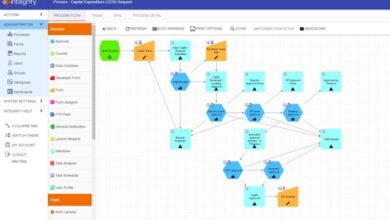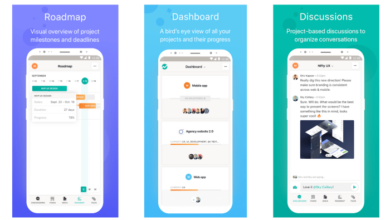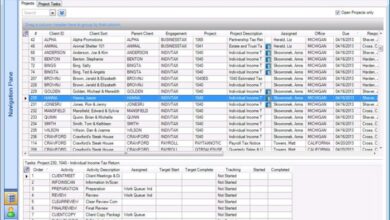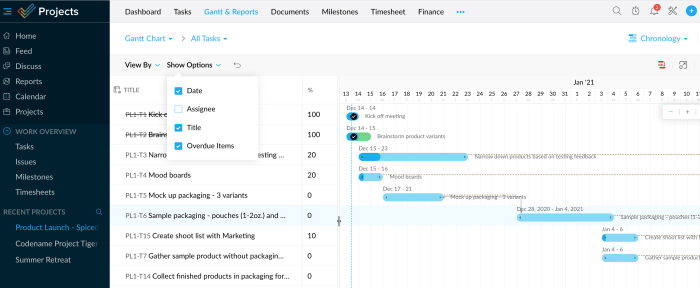
Project Management Budgeting Tools: Your Guide to Success
Project management budgeting tools set the stage for this enthralling narrative, offering readers a glimpse into a story that is rich in detail and brimming with originality from the outset. Project management is a complex process, requiring careful planning, execution, and monitoring.
One of the most critical aspects of project management is budgeting, ensuring that resources are allocated effectively and efficiently to achieve project goals. Project management budgeting tools are essential for streamlining this process, providing a centralized platform to track expenses, forecast costs, and manage financial performance.
These tools empower project managers to make informed decisions, identify potential risks, and optimize resource allocation. By leveraging the power of technology, project management budgeting tools offer a comprehensive solution for managing project finances, helping teams stay on track and achieve their financial objectives.
From simple spreadsheets to sophisticated software solutions, there is a wide range of tools available to suit different project needs and budgets.
Introduction to Project Management Budgeting Tools
Project management budgeting tools are essential for successful project completion. They help project managers allocate resources efficiently, track expenses, and ensure projects stay within budget. By providing a clear financial picture, these tools enable informed decision-making, minimize risks, and optimize project outcomes.
Types of Project Management Budgeting Tools
Project management budgeting tools can be categorized based on their functionalities and target audience. They can be broadly classified into:
- Spreadsheet-based tools:These tools, like Microsoft Excel or Google Sheets, are simple and versatile for basic budgeting. They offer flexibility for customization and allow users to create formulas for calculations. However, they may lack advanced features like collaboration, automated reporting, and integration with other project management tools.
- Dedicated budgeting software:These tools, such as Procore, Planview, and Oracle Primavera, are designed specifically for project budgeting. They offer comprehensive features like cost tracking, resource allocation, forecasting, and reporting. They often integrate with other project management tools, providing a centralized platform for managing project finances.
- Project management software with budgeting capabilities:Several project management platforms, including Asana, Jira, and Monday.com, offer integrated budgeting functionalities. These tools allow users to track expenses, allocate budgets, and monitor project costs alongside other project management activities. They provide a holistic view of project progress and finances.
Examples of Project Management Budgeting Tools
Here are some examples of popular project management budgeting tools:
- Microsoft Excel:A widely used spreadsheet program that provides basic budgeting functionalities, including cost tracking, resource allocation, and forecasting.
- Google Sheets:A cloud-based spreadsheet application that offers similar features to Excel, with added benefits like collaboration and real-time updates.
- Procore:A construction management software that includes comprehensive budgeting tools for tracking costs, managing budgets, and generating reports.
- Planview:A project portfolio management platform that offers advanced budgeting capabilities for managing complex projects and portfolios.
- Oracle Primavera:A widely used project management software that provides robust budgeting tools for planning, scheduling, and managing project costs.
- Asana:A project management platform that integrates budgeting features, allowing users to track expenses and allocate budgets within the platform.
- Jira:A project management tool for software development that offers budgeting capabilities for tracking costs and managing project finances.
- Monday.com:A work operating system that provides customizable budgeting tools for tracking expenses, allocating budgets, and generating reports.
Selecting the Right Project Management Budgeting Tool
Choosing the right project management budgeting tool is crucial for successful project execution. A well-suited tool can streamline budgeting processes, improve accuracy, and enhance collaboration. However, with numerous options available, navigating the selection process can be challenging.
Factors to Consider When Choosing a Budgeting Tool
Selecting the right budgeting tool requires careful consideration of various factors. These factors can be categorized into several key areas:
- Project Needs:Understanding the specific requirements of your projects is paramount. Consider the project size, complexity, and the level of detail required for budgeting. For instance, large-scale projects with multiple stakeholders might necessitate a tool with advanced features for resource allocation, cost tracking, and reporting.
- Budgeting Methodologies:Different tools support various budgeting methodologies. Some tools cater to traditional bottom-up approaches, while others facilitate agile or scenario-based budgeting. Align the tool’s capabilities with your preferred budgeting methodology.
- Integration with Existing Systems:Seamless integration with your existing project management software, accounting systems, and other relevant tools is essential. A tool that integrates well minimizes data duplication and streamlines workflows.
- User-Friendliness and Training:Choose a tool that is intuitive and easy to use. Consider the level of technical expertise within your team and the availability of training resources. A user-friendly interface reduces the learning curve and promotes adoption.
- Reporting and Analytics:The ability to generate insightful reports and analyze budget data is crucial for informed decision-making. Look for tools that offer customizable reports, dashboards, and data visualization capabilities.
- Security and Data Privacy:Data security and privacy are critical, especially when handling sensitive financial information. Ensure the tool complies with industry standards and offers robust security features.
- Pricing and Value:Evaluate the pricing structure and determine the overall value proposition. Consider the tool’s features, functionality, and support services in relation to the cost.
Comparing and Contrasting Budgeting Tools
Once you’ve identified the key factors, it’s time to compare and contrast different tools. Here’s a breakdown of some popular options:
| Tool | Key Features | Pricing | User-Friendliness |
|---|---|---|---|
| Microsoft Project | Advanced project management features, including budgeting and resource allocation. | Subscription-based, with various plans available. | Steep learning curve, requires some technical expertise. |
| Wrike | Comprehensive project management platform with budgeting and expense tracking capabilities. | Subscription-based, with different plans for teams and enterprises. | Intuitive interface, user-friendly for both individuals and teams. |
| Zoho Projects | Offers budgeting, expense tracking, and time tracking features. | Subscription-based, with various plans to suit different needs. | Easy-to-use interface, suitable for small to medium-sized businesses. |
| Asana | Project management platform with basic budgeting and expense tracking capabilities. | Subscription-based, with different plans for teams and organizations. | Simple and intuitive interface, suitable for teams of all sizes. |
Evaluating Tool Suitability for Specific Project Needs, Project management budgeting tools
After comparing and contrasting various tools, it’s essential to evaluate their suitability for your specific project needs. Consider the following:
- Project Complexity:If your project is highly complex with multiple budget categories and stakeholders, you’ll need a tool with advanced features for resource allocation, cost tracking, and reporting. Tools like Microsoft Project or Wrike might be suitable in such cases.
Project management budgeting tools are essential for keeping track of finances and ensuring projects stay within budget. But sometimes, even the most meticulous planning can be thrown off by unexpected expenses, like a sudden surge in demand for a product inspired by the recent Barbie x Missguided back collection.
Luckily, many budgeting tools offer features like flexible forecasting and real-time reporting to help adjust to these unexpected changes, ensuring your project stays on track financially.
- Team Size and Expertise:For small teams with limited technical expertise, a user-friendly tool like Asana or Zoho Projects might be a better fit. Larger teams with diverse skill sets may benefit from more comprehensive tools like Wrike or Microsoft Project.
- Budgeting Methodologies:If you use a traditional bottom-up approach, tools like Microsoft Project or Wrike might be more suitable. For agile or scenario-based budgeting, consider tools that offer flexible budgeting capabilities.
- Integration with Existing Systems:Prioritize tools that seamlessly integrate with your existing project management software, accounting systems, and other relevant tools. This ensures data consistency and minimizes duplication of effort.
Using Project Management Budgeting Tools Effectively
Project management budgeting tools are powerful resources for managing finances, but their true value lies in how effectively they are implemented and utilized. This section delves into best practices for maximizing the potential of these tools.
Creating and Managing Project Budgets
A well-defined process for creating and managing project budgets is essential for financial success. The following steps provide a structured approach to utilize project management budgeting tools effectively:
- Define Project Scope and Objectives:A clear understanding of the project’s scope and objectives is fundamental. Define deliverables, timelines, and resources required to achieve the project goals. This lays the groundwork for accurate budgeting.
- Estimate Costs:Break down the project into smaller, manageable tasks. Estimate the cost of each task, considering labor, materials, equipment, and other expenses. Use historical data, industry benchmarks, and expert opinions to refine estimates.
- Develop a Budget Template:Leverage the tool’s features to create a comprehensive budget template. Include categories for various cost elements, such as labor, materials, travel, and overhead. This ensures consistency and facilitates tracking.
- Allocate Budget Resources:Assign budget allocations to specific tasks and phases of the project. This helps monitor resource utilization and identify potential overspending.
- Track Expenses:Regularly monitor expenses against the allocated budget. Utilize the tool’s reporting features to generate detailed expense reports, identify variances, and track spending patterns.
- Forecast Costs:Analyze historical data and project trends to forecast future costs. Use the tool’s forecasting capabilities to project potential expenses and identify areas requiring adjustments.
- Analyze Budget Performance:Regularly review budget performance and identify deviations from the planned budget. Analyze the reasons for variances and implement corrective measures to stay within budget constraints.
Tracking Expenses
Tracking expenses is crucial for maintaining financial control and ensuring project profitability. Project management budgeting tools offer robust features to streamline this process:
- Expense Categorization:Categorize expenses according to predefined categories, such as labor, materials, travel, and marketing. This provides insights into spending patterns and facilitates analysis.
- Expense Reporting:Generate detailed expense reports, including date, category, description, and amount. This allows for a clear understanding of expenditure trends and helps identify areas for cost optimization.
- Expense Approvals:Implement approval workflows for expenses, ensuring that all expenditures are authorized before being recorded. This promotes financial accountability and reduces the risk of unauthorized spending.
- Expense Reconciliation:Regularly reconcile recorded expenses with bank statements and invoices. This helps identify discrepancies and ensures the accuracy of financial records.
Forecasting Costs
Accurate cost forecasting is essential for proactive financial management and risk mitigation. Project management budgeting tools provide functionalities to predict future expenses:
- Historical Data Analysis:Utilize historical data on past projects to identify trends and patterns in cost behavior. This data can be used to develop predictive models for future costs.
- Scenario Planning:Develop multiple cost scenarios based on different assumptions and market conditions. This allows for a comprehensive assessment of potential cost variations and their impact on project profitability.
- Trend Analysis:Identify emerging trends in labor costs, material prices, and other relevant factors that may impact project expenses. This helps anticipate potential cost fluctuations and adjust budgets accordingly.
- Forecasting Models:Leverage the tool’s forecasting models to predict future costs based on historical data, current trends, and project assumptions. These models provide a quantitative basis for budget projections.
Analyzing Budget Performance
Regularly analyzing budget performance is crucial for identifying areas for improvement and ensuring financial success. Project management budgeting tools offer a range of features to facilitate this process:
- Variance Analysis:Compare actual expenses to the planned budget and identify variances. Analyze the reasons for these deviations and implement corrective measures to stay within budget constraints.
- Performance Reports:Generate comprehensive performance reports that highlight key budget metrics, such as spending patterns, cost overruns, and resource utilization. This provides a clear picture of budget performance and facilitates decision-making.
- Budgeting Dashboards:Utilize dashboards to visualize key budget metrics and track progress against financial goals. This provides a high-level overview of budget performance and facilitates timely intervention.
- Cost Optimization Strategies:Analyze budget data to identify areas for cost optimization. Implement strategies to reduce expenses, improve efficiency, and maximize resource utilization.
Benefits and Challenges of Using Project Management Budgeting Tools
Project management budgeting tools are essential for organizations seeking to manage their resources effectively and achieve their project goals. These tools provide a structured framework for planning, tracking, and controlling project finances, leading to improved accuracy, efficiency, and overall project success.
However, it’s important to consider both the benefits and challenges associated with using these tools to make informed decisions about their implementation.
Benefits of Using Project Management Budgeting Tools
Project management budgeting tools offer numerous advantages that can significantly improve project financial management.
Project management budgeting tools are essential for keeping projects on track and within budget, but they can be cumbersome to use. A more streamlined approach is to use strong security measures like google passkeys chrome android , which can help ensure the safety of your project data and prevent unauthorized access.
With a secure foundation, you can focus on the core tasks of budgeting and resource allocation, making your projects more efficient and successful.
- Enhanced Accuracy and Control:Budgeting tools automate calculations and provide real-time data on project costs, ensuring accuracy and minimizing errors. This allows project managers to maintain tight control over project finances and make informed decisions based on reliable data.
- Improved Planning and Forecasting:These tools facilitate detailed project budgeting, enabling accurate cost estimation and forecasting. Project managers can create realistic budgets, allocate resources effectively, and identify potential cost overruns early on, enabling proactive adjustments and mitigating risks.
- Streamlined Budgeting Processes:Budgeting tools streamline the budgeting process by providing a centralized platform for managing project finances. This eliminates the need for manual calculations, spreadsheets, and multiple communication channels, saving time and effort while reducing the risk of inconsistencies.
- Increased Transparency and Collaboration:Budgeting tools promote transparency by providing all stakeholders with access to real-time project financial data. This fosters collaboration, enabling teams to work together effectively and make informed decisions based on shared information.
- Enhanced Reporting and Analysis:Budgeting tools generate comprehensive reports and provide insightful analytics on project finances. This allows project managers to track progress, identify trends, and make data-driven decisions to optimize project performance and resource allocation.
Challenges of Using Project Management Budgeting Tools
While project management budgeting tools offer significant benefits, it’s crucial to acknowledge potential challenges and limitations.
- Implementation Complexity:Implementing budgeting tools can be complex, requiring time, effort, and resources for setup, configuration, and user training. Organizations need to carefully plan and manage the implementation process to ensure successful adoption and avoid disruptions.
- Data Accuracy and Integrity:The accuracy of budgeting tools depends on the quality of data input. Inaccurate or incomplete data can lead to unreliable cost estimates and forecasts, impacting project planning and decision-making. Organizations need to establish robust data management practices to ensure data accuracy and integrity.
Project management budgeting tools are essential for keeping track of expenses and ensuring your projects stay on track. But sometimes, you need a break from the spreadsheets and deadlines! A fun way to unwind is to make your own clay word magnets , which can be a relaxing and creative outlet.
Once you’ve recharged, you’ll be ready to tackle those budgets with renewed energy!
- User Adoption and Training:Effective use of budgeting tools requires user buy-in and training. Organizations need to provide adequate training and support to ensure users understand the tool’s functionalities and can utilize it effectively. Resistance to change or lack of training can hinder the tool’s effectiveness.
- Cost and Resource Requirements:Implementing and maintaining budgeting tools can involve significant costs, including software licensing fees, hardware upgrades, and ongoing support. Organizations need to carefully assess the cost-benefit analysis and allocate sufficient resources to ensure a successful implementation.
Pros and Cons of Using Project Management Budgeting Tools
| Pros | Cons |
|---|---|
| Improved accuracy and control over project finances | Implementation complexity and potential for disruptions |
| Enhanced planning and forecasting capabilities | Data accuracy and integrity depend on user input |
| Streamlined budgeting processes and reduced manual effort | Requires user adoption and training for effective utilization |
| Increased transparency and collaboration among stakeholders | Significant costs associated with software, hardware, and support |
Case Studies and Real-World Applications
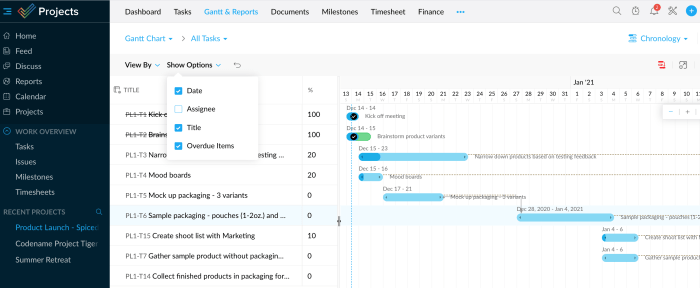
Project management budgeting tools are not just theoretical concepts; they have proven their worth in real-world scenarios. These tools have helped organizations across various industries achieve better project outcomes, improve financial management, and enhance overall project efficiency. Here, we’ll delve into some case studies showcasing the impact of these tools in different contexts.
Real-World Applications of Project Management Budgeting Tools
- Construction Industry:A large construction company implemented a project management budgeting tool to manage the budget for a complex infrastructure project. The tool helped them track expenses in real-time, identify potential cost overruns, and make informed decisions to stay within budget.
The result was a successful project completion within the allocated budget.
- Software Development:A software development company used a project management budgeting tool to estimate project costs, track time spent on tasks, and manage resources efficiently. The tool allowed them to allocate resources effectively, monitor progress, and ensure the project stayed within budget.
This resulted in improved project predictability and increased profitability.
- Marketing Campaigns:A marketing agency implemented a project management budgeting tool to manage the budget for a multi-channel marketing campaign. The tool enabled them to track expenses across different channels, analyze campaign performance, and make data-driven decisions to optimize their budget allocation.
This led to a more effective campaign with a higher return on investment.
Impact of Project Management Budgeting Tools on Project Outcomes
The use of project management budgeting tools has a significant impact on project outcomes. Here are some key benefits:
- Improved Budget Control:Project management budgeting tools provide real-time visibility into project expenses, allowing for better budget control. They enable project managers to track spending, identify potential overruns, and take corrective measures to stay within budget.
- Enhanced Financial Management:These tools facilitate better financial management by providing insights into project costs, resource allocation, and profitability. This allows for informed decision-making and improved financial planning.
- Increased Project Efficiency:By automating tasks such as budget allocation, expense tracking, and reporting, project management budgeting tools free up time for project managers to focus on strategic activities. This leads to increased project efficiency and improved productivity.
- Improved Project Outcomes:By enabling better budget control, financial management, and efficiency, project management budgeting tools ultimately contribute to improved project outcomes. This can include meeting deadlines, delivering projects within budget, and achieving desired project goals.
Case Studies of Project Management Budgeting Tools
To further illustrate the impact of project management budgeting tools, let’s examine some specific case studies:
| Case Study | Industry | Tool Used | Outcome |
|---|---|---|---|
| Construction Project | Construction | Procore | Project completed within budget and on time, with improved communication and collaboration among team members. |
| Software Development Project | Software Development | Jira | Reduced project costs by 15% and improved project predictability by 20%. |
| Marketing Campaign | Marketing | Asana | Increased campaign ROI by 10% and improved campaign performance through better budget allocation and tracking. |
Future Trends in Project Management Budgeting Tools
The field of project management budgeting is rapidly evolving, driven by technological advancements and changing business needs. Project management budgeting tools are becoming more sophisticated, offering a wider range of features and capabilities to help organizations better manage their projects and resources.
The Impact of Artificial Intelligence and Machine Learning
AI and ML are transforming project management budgeting tools, enabling them to analyze vast amounts of data and identify patterns and trends that can be used to improve forecasting accuracy and optimize resource allocation.
- Predictive Budgeting:AI-powered budgeting tools can analyze historical data, project timelines, and market trends to predict future costs with greater accuracy. This allows organizations to make more informed budgeting decisions and allocate resources more effectively.
- Automated Cost Tracking and Reporting:AI can automate the process of tracking expenses, identifying anomalies, and generating detailed reports. This frees up project managers to focus on strategic planning and decision-making.
- Resource Optimization:Machine learning algorithms can analyze resource availability, skill sets, and project requirements to optimize resource allocation and minimize project delays.
Integration with Other Project Management Tools
Project management budgeting tools are increasingly being integrated with other project management platforms, such as task management, collaboration, and communication tools.
- Seamless Data Flow:Integration allows for seamless data flow between different project management tools, eliminating the need for manual data entry and reducing the risk of errors.
- Real-Time Visibility:Integrated tools provide real-time visibility into project budgets, resource allocation, and project progress, enabling organizations to make more informed decisions and take corrective actions quickly.
- Centralized Platform:A centralized platform simplifies project management by providing a single source of truth for all project data, including budget information.
Cloud-Based Project Management Budgeting Tools
Cloud-based project management budgeting tools are gaining popularity due to their flexibility, scalability, and accessibility.
- Accessibility:Cloud-based tools can be accessed from anywhere with an internet connection, allowing teams to collaborate on budgets regardless of their location.
- Scalability:Cloud-based tools can easily scale to accommodate the needs of growing organizations, ensuring that they have the resources they need to manage their projects effectively.
- Cost-Effectiveness:Cloud-based tools often have a lower upfront cost compared to on-premise software, making them a more attractive option for businesses of all sizes.



